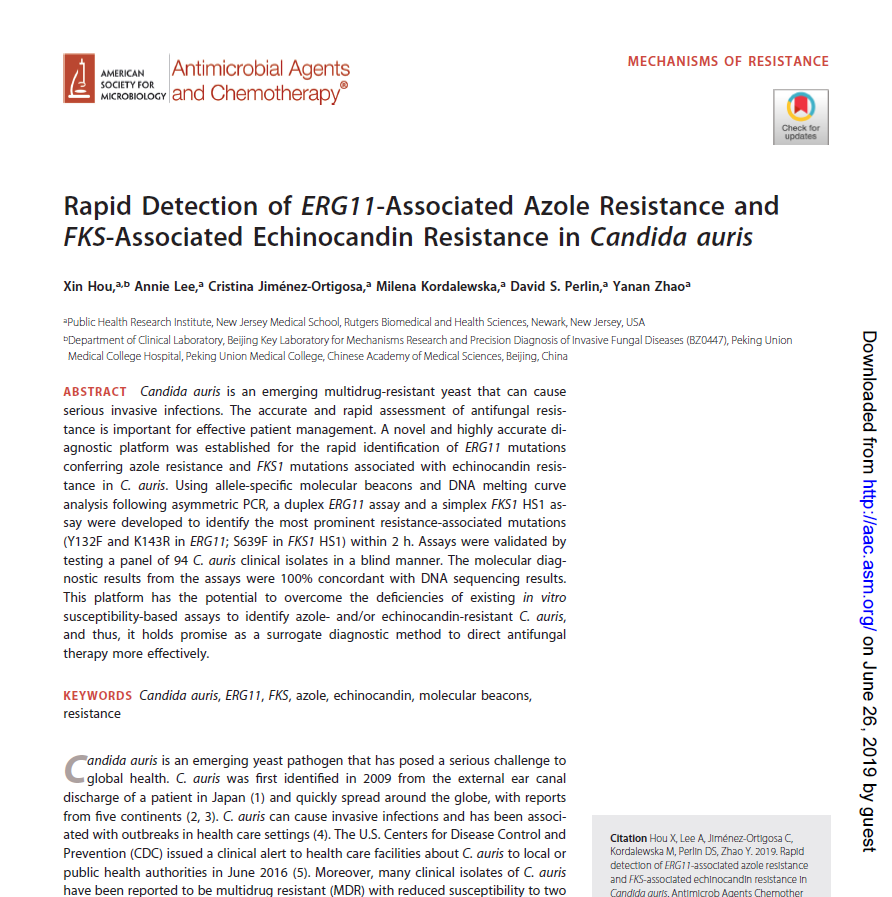
- July 08, 2019
Rapid Detection of ERG11-Associated Azole Resistance and FKS-Associated Echinocandin Resistance in Candida auris
Xin Hou, Annie Lee, Cristina Jiménez-Ortigosa, Milena Kordalewska, David S. Perlin, Yanan Zhaoa | Public Health Research Institute, New Jersey Medical School, Rutgers Biomedical and Health Sciences, Newark, New Jersey, USA, Department of Clinical Laboratory, Beijing Key Laboratory for Mechanisms Research and Precision Diagnosis of Invasive Fungal Diseases (BZ0447), Peking Union Medical College Hospital, Peking Union Medical College, Chinese Academy of Medical Sciences, Beijing, China| 2019 | Antimicrobial Agents and Chemotherapy: Vol. 63, no. 1, e01911-18
Candida auris is an emerging yeast pathogen that causes invasive infections and has been associated with outbreaks in health care settings. It is important to detect and identify as it is known to be multidrug resistant with reduced susceptibility to two or three classes of antifungal drugs. The mutation in ERG11 (the gene encoding lanosterol 14-ɑ-demethylase) and FKS1 (the gene encoding the catalytic subunits of the drug target enzyme ß-1,3-D-glucan synthase) is the only mechanisms observed for azole and echinocandin resistance respectively in C. auris. This study developed a rapid diagnostic platform to identify FKS1-associated echinocandin resistance and ERG11-associated azole resistance in C. auris. The diagnostic platform used a duplex asymmetric PCR in conjunction with molecular beacon probe-based melting curve analysis that was performed on the Mic Real-Time PCR cycler.
Read More